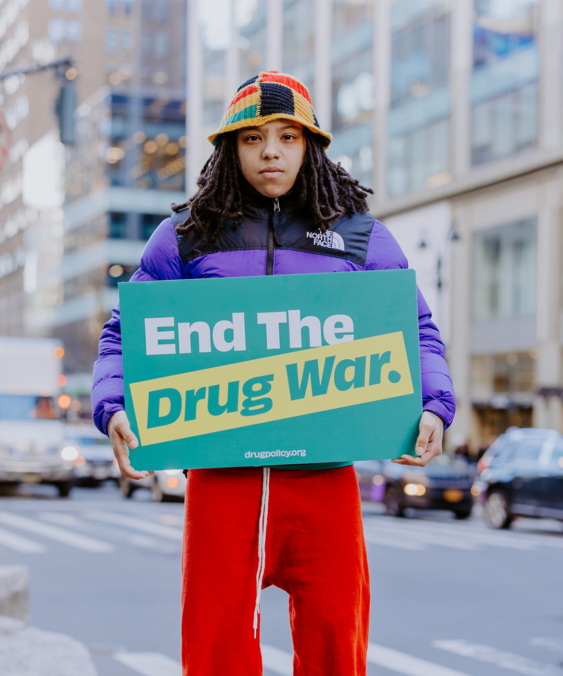
<h2 class="subtitle">
Contact:</h2>
<p>Tony Newman 646-335-5384<br />
Hannah Hetzer 917-701-7060</p>
On Saturday, Colombian President Juan Manuel Santos called for the suspension of Colombia’s aerial spraying program to eradicate illicit crop cultivation. This came after the recent release of a study by the International Agency for Research on Cancer (IARC), a research arm of the World Health Organization, which found that the main chemical used in the aerial spraying program, glyphosate, is likely carcinogenic to humans.
“Few presidents have been as bold as President Santos in calling for global alternatives to the failed drug war,” said Ethan Nadelmann, Executive Director of the Drug Policy Alliance. “His suspension of the spraying program suggests that he recognizes the need to promote reforms not just on the global stage but at home as well.”
After the report was released, Colombian Health Minister Alejandro Gaviria made a strong recommendation to cease aerial spraying, stating that the report’s findings on glyphosate represent an “inescapable warning of possible adverse health effects.” However, Colombia's Defense Minister responded by saying that the country would continue to use glyphosate until President Santos orders otherwise, exposing a rift between the response and perspective of the two agencies – Health and Defense – on drug control.
On May 15, the decision on halting aerial spraying will be taken during a meeting with the National Council on Drugs, in which the Ministries of Health, Justice, Interior, and the offices of the Inspector General, Prosecutor General and Ombudsman will be present. “I am going to ask the government officials in the National Drug Council at their next meeting to suspend glyphosate spraying of illicit cultivation [of coca],” President Santos said.
The IARC study said that glyphosate is “probably carcinogenic to humans”, may cause Non-Hodgkin lymphoma, and that there is already “convincing evidence that glyphosate (…) can cause cancer in laboratory animals.” The health risks of glyphosate have long been of concern to Colombian academics, non-governmental organizations, and communities affected by spraying. But the burden of proof of harm has rested mainly with the affected communities, who have long complained of skin rashes, irritations and genetic abnormalities resulting from this practice. Colombia has not taken the necessary precautions mandated by its law, which require the Ministry of Health to collect data from hospitals in areas subjected to spraying to detect patterns and risks. This measure was never implemented, resulting in an absence of official data on risks, harms and illnesses associated with aerial spraying.
“It is good to see scientific evidence emerging to support the claims that Colombian communities and indigenous groups have long been making about the health and environmental harms of fumigation,” said Hannah Hetzer, Policy Manager of the Americas at the Drug Policy Alliance. “The warning that glyphosate is potentially carcinogenic should act as an immediate impetus to halt Colombia’s aerial spraying programs. But the problem of forced crop eradication goes beyond this single herbicide. A program based on indiscriminately spraying vast amounts of chemicals on agriculture and communities in the hope that it will reduce overall drug supply is neither realistic nor ethical. Increased eradication has often produced the “balloon effect” of simply displacing cultivation elsewhere, without reducing the overall availability of, or market for, illicit drugs.”
Since 2000, Colombia has used glyphosate it its aerial spraying program, fumigating 1.5 million hectares of illicit crops at a cost of $668 million in ten years. The damaging effects of glyphosate are compounded by the vast amounts necessary to eliminate crops. A recent study by Pascual Restrepo of MIT and Sandra Rozo of UCLA showed that for every hectare sprayed with glyphosate, illicit crops are reduced in only 0.035 hectares. In other words, to eliminate a hectare of coca, 30 hectares must be sprayed with glyphosate, at a financial cost of $72,000 per hectare. This is an inefficient program, which affects the country’s health and environment. In 2007, Afghanistan halted the use of glyphosate for aerial spraying, leaving Colombia the only country in the world to continue with this practice.
“Colombia should use this opportunity to take the conversation beyond glyphosate and call into question its overall approach to drug cultivation and drug policy,” said Hetzer. “Instead of spraying its fields and communities with herbicides, Colombia should focus on alternative development programs, licit production of the coca leaf for ancestral and commercial uses, and shift its efforts from repression to health and development.”
